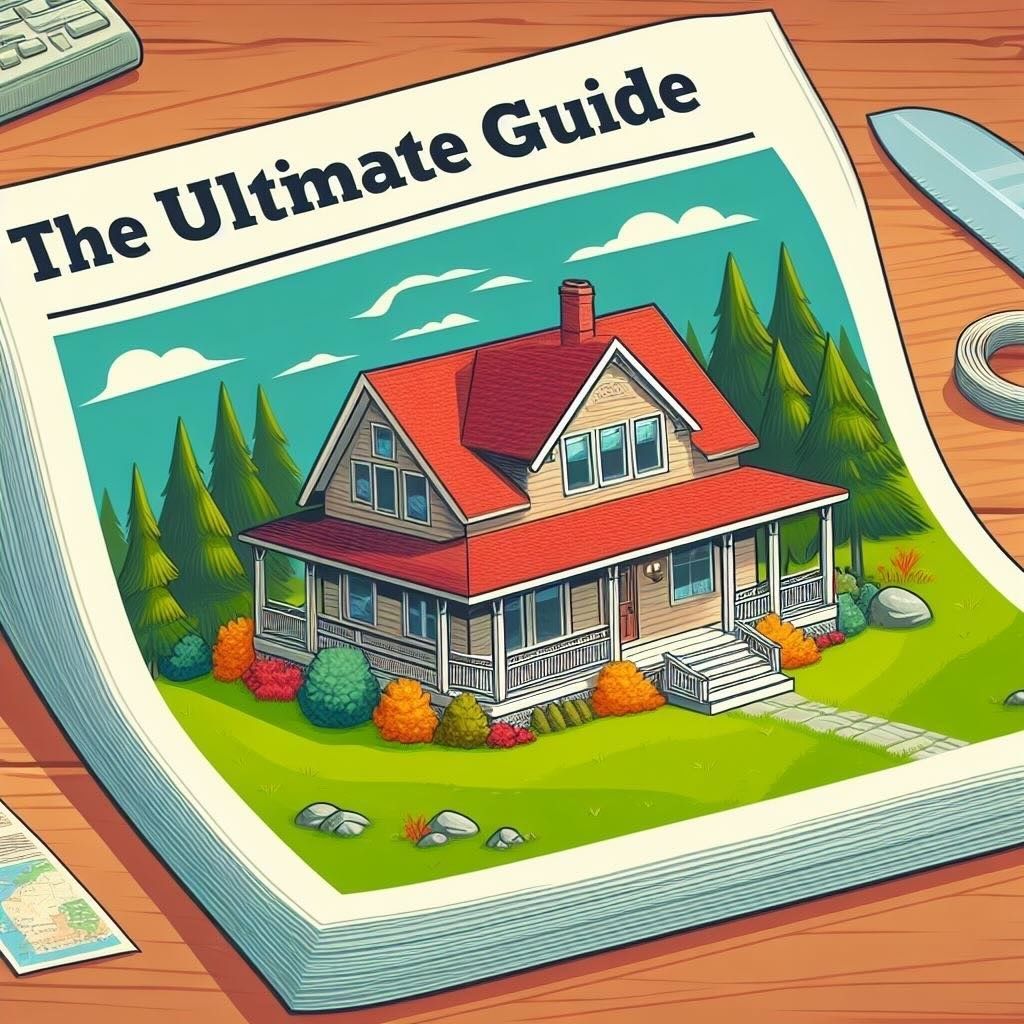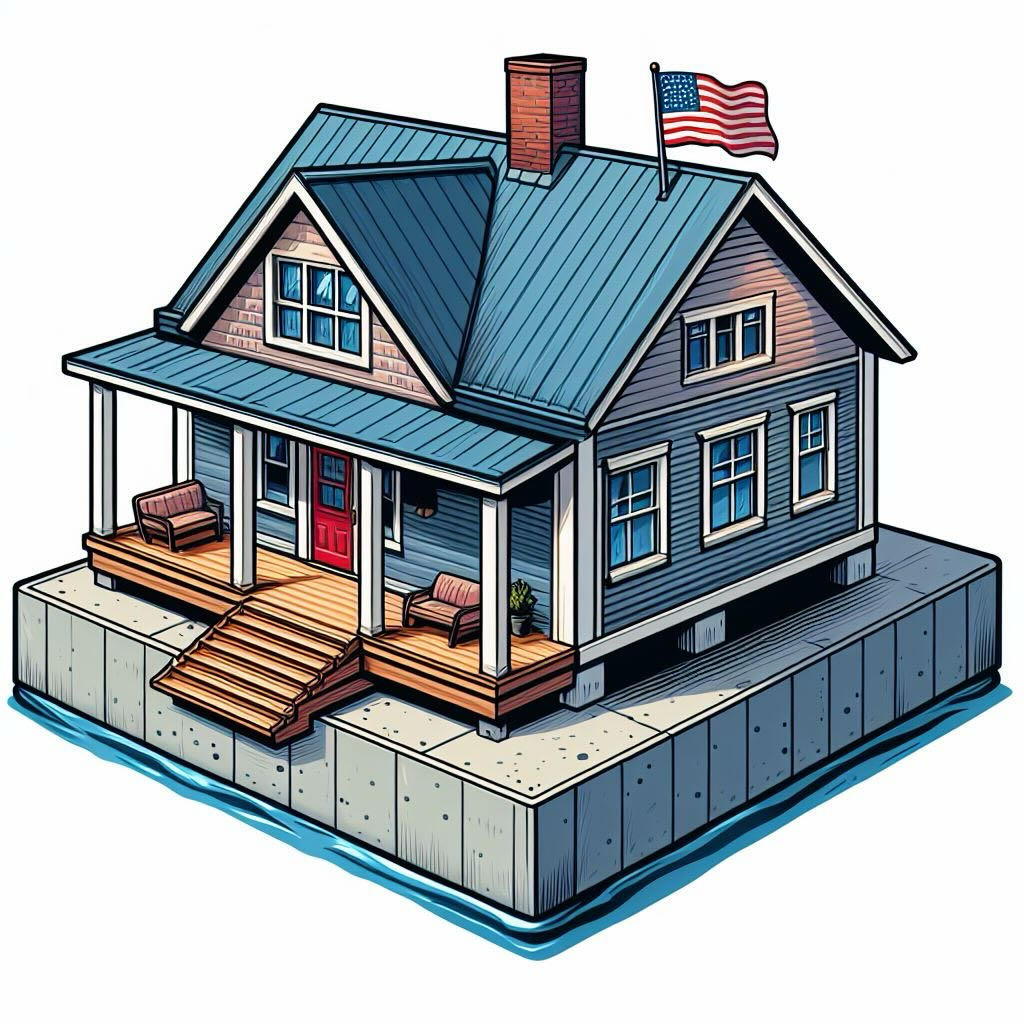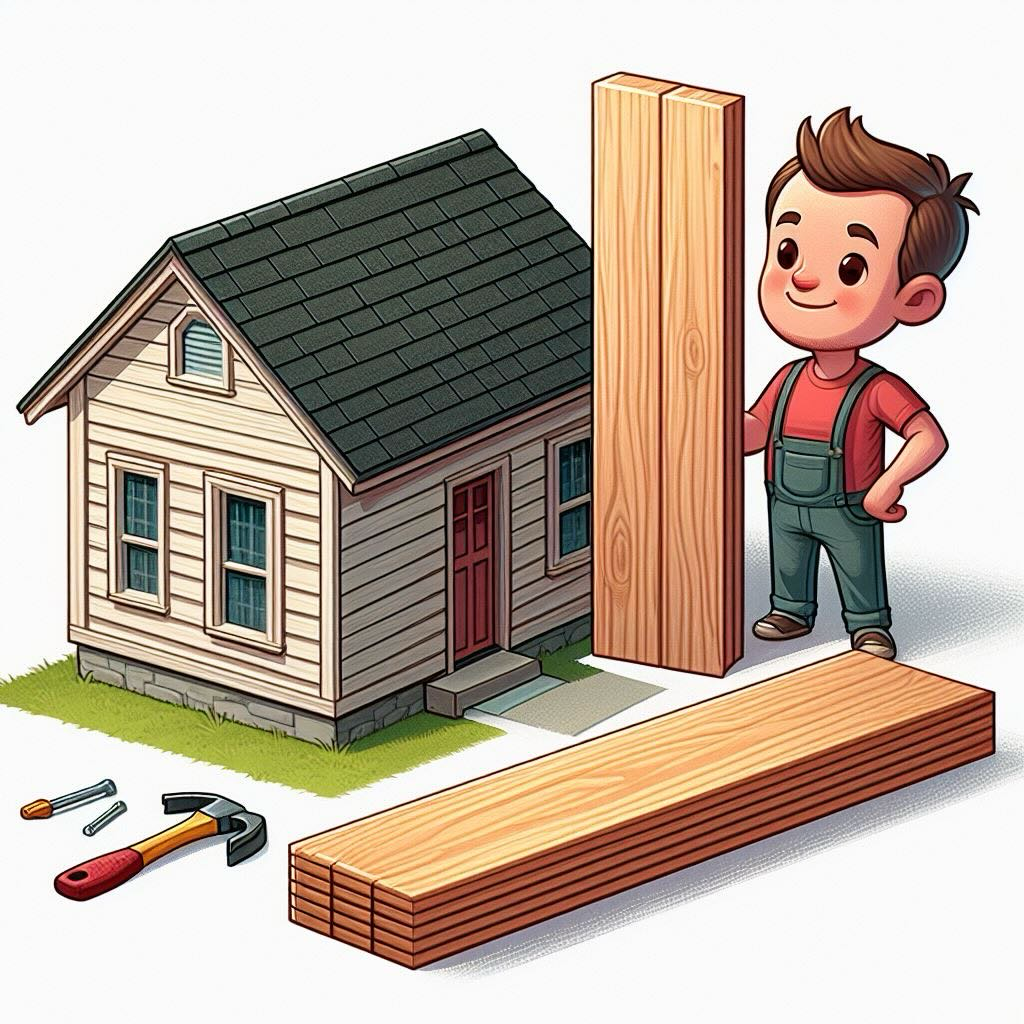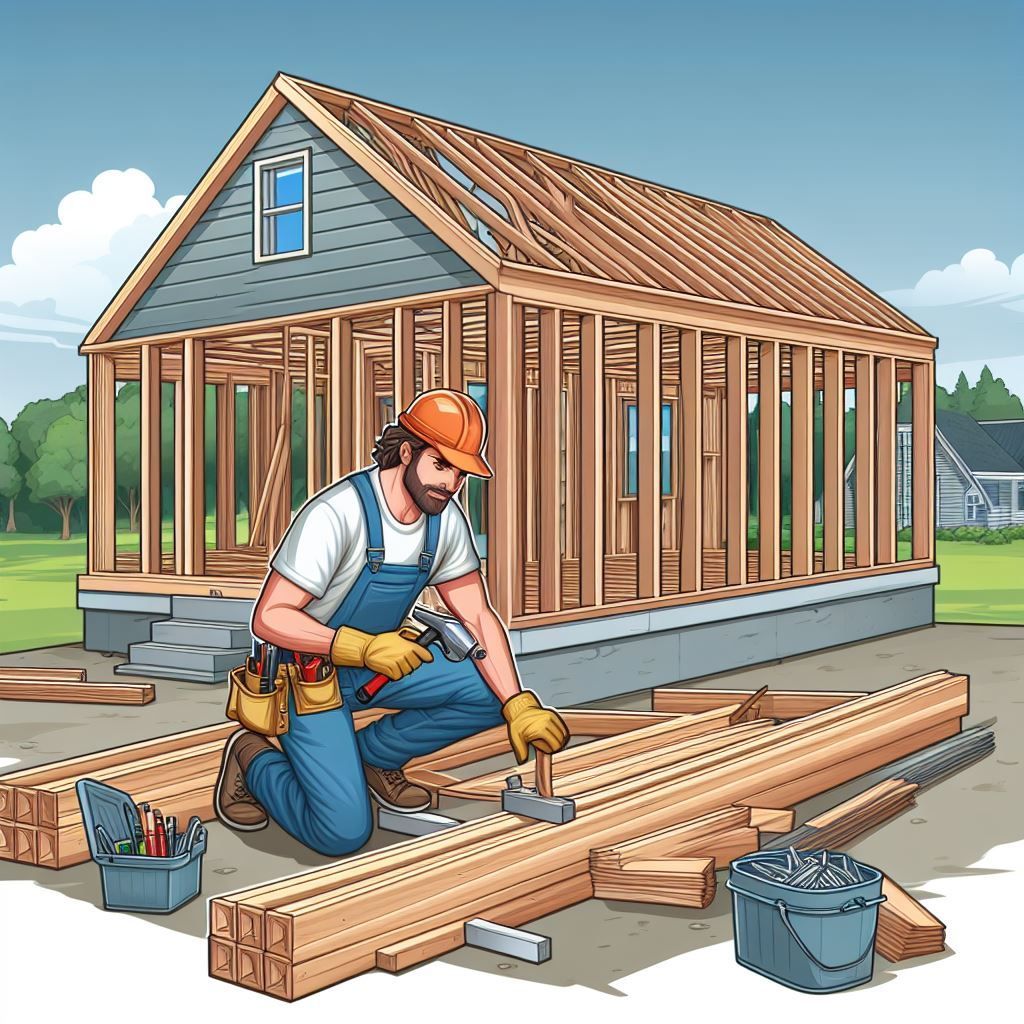The Ultimate Guide To Building A House In Maine In 2024
Building A House In Maine Doesn't Have to Be So Complicated

Table of Contents
- How Much Does It Cost to Build A House in Maine?
- Choosing Your Maine Home Builder
- Choosing a Community For Your New Home Build
- Drafting Services For Your Dream Maine Home
- Deciding on a Maine house foundation
- Deciding on house materials
- Building Frame to finish
- Don’t Forget Your Utilities
- Getting Those Keys
- Conclusion
Introduction
Are you dreaming of building a house in Maine in 2024? If so, you might be wondering how to plan, budget, and execute your project successfully.
Building a new home can be a rewarding and exciting experience, but it also comes with many challenges and decisions. That’s why we created this ultimate guide to building a new home in Maine in 2024.
In this comprehensive guide, we will cover everything you need to know, from finding the right location and design to hiring the best contractors and suppliers to navigating the legal and financial aspects of home construction to the day you move in and call the home your own.
Whether you are a first-time home builder or a seasoned pro, this guide will help you avoid common pitfalls and achieve your dream home.
Read on to learn more!
How much does it cost to build a house in Maine?
Read below to discover the cost of building in Maine

If you are planning to build a new home in Maine, you might be wondering how to budget for your dream project.
According to GoBankingRates, the average cost of building a house in Maine is estimated at $187,222, which is a little higher than the average for most states. This does not factor in foundation, excavation, land, or permit costs. Based on market changes and varying labor rates, this number is subject to change.
On average, most contractors in Central Maine charge between $55-$85 / hour in labor. The cost of building a house in Maine also depends on the location, size, and style of the house you want to build. For instance, building a house in a rural county is cheaper than in a coastal town or a city like Portland.
The materials you choose to build your home can make a tremendous difference, whether you choose to go with vinyl siding or cedar shingles, an asphalt shingle roof or a metal roof, or vinyl windows or wood windows, all of these decisions and more play an important part in that bottom line number.
The table below, which does not factor in land, well, septic, or excavation costs, shows the average cost per square foot to build a house in Maine for different home sizes:
| Size | Average Price Range |
|---|---|
| 800 sq. ft. | $112,800 |
| 1,000 sq. ft. | $141,000 |
| 1,200 sq. ft. | $169,200 |
| 1,400 sq. ft. | $197,400 |
| 1,500 sq. ft. | $211,500 |
| 1,700 sq. ft. | $239,700 |
| 2,000 sq. ft. | $282,000 |
| 2,500 sq. ft. | $352,500 |
| 3,000 sq. ft. | $441,000 |
| 3,500 sq. ft. | $564,000 |
| 4,000 sq. ft. | $634,500 |
It helps to determine during the planning phase what’s most important to you versus what is just “nice to have.” Figuring this out upfront will help you make the right decisions to achieve what you really want without blowing your budget out of the water.
You’ll want to save for a down payment: The down payment is the money you pay upfront when buying a house. The more you can pay as a down payment, the less you will have to borrow and pay interest.
The minimum down payment required for a conventional mortgage is usually 5 percent of the purchase price, but some lenders may require more or less depending on your credit score and loan type. If you can pay 20 percent or more as a down payment, you can avoid paying mortgage insurance, which is an extra fee that protects the lender in case you default on the loan.
You’ll also want to budget for maintenance and repairs: When you own a home, you are responsible for maintaining and repairing it.
You should set aside some money every month for routine maintenance and unexpected repairs. A general rule of thumb is to budget 1 to 2 percent of the home value per year for maintenance and repairs.
For example, if your home is worth $300,000, you should budget $3,000 to $6,000 per year for maintenance and repairs. You should also have an emergency fund that can cover at least three to six months of your living expenses in case of a major repair or a loss of income.
Don’t forget to consider other expenses: Besides the mortgage payment, maintenance and repairs, and contractor fees, you should also consider other expenses that come with owning a home. These include property taxes, homeowner’s insurance, homeowner’s association dues, utilities, landscaping, and furniture. You should research the average costs of these expenses in your area and include them in your budget.
If you need more help or guidance on budgeting, please feel free to contact us at RJR Building or leave a comment below. We would love to hear from you and answer any questions you may have.
Finding a Maine Homebuilder
Discover the applicable and simple steps to finding your general contractor.

Choosing a builder can be intimidating, especially when you don’t know who to trust.
We’ve all heard horror stories of contractors taking people’s money and running without ever doing any work.
So, how do you find a reliable and reputable builder?
One of the most important steps in building a new home is finding a home builder that you can trust and work with. A good builder will construct a high-quality home and guide you through the entire process, from planning and permitting to financing and warranty. A good builder will also have a positive history, track record, and a portfolio of previous work.
There are many ways to find a builder, such as asking for referrals from friends, family, or realtors, browsing online directories and reviews, or visiting model homes and open houses.
You’ll want to vet your potential builders with a series of questions to learn their credibility. Here are some questions you can ask to help you narrow down your choices:
- How long have you been in business and how many homes have you built?
- What are your credentials and certifications?
- What are your specialties and styles?
- What are your standard features and options?
- How do you handle changes and upgrades?
- How do you communicate and coordinate with clients, subcontractors, and suppliers?
- How do you ensure quality control and safety?
- How do you manage timelines and budgets?
- What are your warranty and service policies?
You should also check the builder’s references, portfolio, and reputation. Ask for testimonials from past clients or other contractors they’ve worked with, and visit their completed or ongoing projects.
Here at RJR Building, we pride ourselves on having over 20+ years of general contracting and home-building experience. We’ve served hundreds of customers across all of Maine and have completed all types of jobs for all types of people.
Choosing a Maine community for your new home
From coastal towns to rural woods country, there's a place for your new home.

Another key factor in building a new home is choosing a community that matches your vision and values.
Maine offers a variety of communities, from urban to rural, coastal to inland, historic to modern, and everything in between. Each community has its own character, culture, and amenities, and you should consider what matters most to you and your family.
Some of the aspects to consider when choosing a community are:
- Location: How far is it from your work, school, family, and friends? How convenient is it to access highways, airports, and other services?
- Environment: What is the climate, landscape, and natural beauty of the area? How well is it preserved and protected? How prone is it to natural disasters or environmental hazards? Some parts of Maine are more prone to heavy weather and intense winters than others.
- Lifestyle: What are the recreational, cultural, and social opportunities in the area? What are the local attractions, events, and activities? How diverse and inclusive is the population?
- Cost: How affordable are the housing, land, and taxes in the area? How does it compare to other communities in the region? What are the future prospects and trends of the market?
- Safety: How secure and peaceful is the area? What are the crime rates and public safety measures? How responsive and reliable are the emergency services?
You can research different communities online, through websites, blogs, forums, and social media. You can also visit them in person, talk to the locals, and get a feel for the vibe and atmosphere. You can also consult with your builder, who may have experience and insights into various communities and their pros and cons.
Here at RJR Building, we’ve helped customers all across the state, and we have a comprehensive understanding of Maine’s local communities.
Contact us today to inquire about your dream home!
Designing your dream Maine home
Whether you want to build a new home from scratch or renovate an existing one, there are some important steps to consider before you start.
- Find your inspiration. Maine is a beautiful state with diverse landscapes and architectural styles. You can find inspiration from the natural scenery, the historic buildings, or the modern trends. Browse through magazines, websites, blogs, or social media to see what appeals to you. You can also visit some of the best residential architects in Maine to see their portfolios and get some ideas.
2. Define your goals and budget.
- What do you want most in building a Maine home?
- How many bedrooms and bathrooms do you need?
- What features and amenities do you want?
- How much space and privacy do you require?
- How much can you afford to spend?
These are some of the questions you need to answer before you start designing your home. Having a clear vision and a realistic budget will help you avoid unnecessary stress and disappointment later on.
3. Choose your location and site.
The location and site of your home will have a significant impact on your design and construction. You need to consider factors such as accessibility, zoning, utilities, soil, drainage, orientation, views, and climate. You also need to check the local codes and regulations that may affect your project.
You can consult with a professional surveyor, engineer, or architect to help you evaluate and select the best site for your home.
You’ll also want to call the local town office and inquire to the Code Enforcement Officer on what regulations to be aware of when building new in that town. This will also help with gaining an understanding of how your home should be properly built and what codes you’ll want to keep your builder accountable for upholding.
4. Hire a professional team.
Designing and building a home is a complex and collaborative process that requires the expertise and skills of various professionals. In most cases, a drafting service that’s provided by a company like Hammond Lumber is sufficient for the job.
Hammond Lumber draws detailed conceptual designs (not architectural) that many builders are able to use and build with. Their drafting and design team is easy to work with and is able to help guide you through various design decisions.
However, if the vision of your home is more complex and exceeds what can be accomplished by conventional building alone, you will need an architect, a contractor, an engineer, and possibly other specialists depending on your project. You can find reputable and experienced professionals online or through referrals from friends, family, or colleagues.
I would suggest first going through a service like Hammond Lumber, and the drafting specialists there can determine whether your vision is achievable by conventional means of building. If you go with a drafting service like Hammond Lumber, then it will be much cheaper than consulting with an architect, who can charge upwards of thousands of dollars and more depending on the design.
If you do require an architect, make sure you check an architect’s credentials, references, portfolio, and reviews before you hire them. Many people can lead you to believe they are architects. However, in many cases, they are only “designers” because they do not have the proper credentials.
You should also communicate your expectations, preferences, and budget clearly and frequently with your design service team to ensure a smooth and successful outcome to what you want.
How to decide on a foundation for your new Maine home
Maine's extreme weather patterns put homes to the test. Build your home to last.

Choosing the right type of foundation for your home build can make a big difference in your comfort, energy efficiency, and maintenance costs.
There are four main types of foundations that are commonly used in Maine:
- Radiant heated slabs,
- Full foundations,
- Concrete piers,
- & Adjustable piers.
Each of these options has its pros and cons, depending on your site conditions, budget, and preferences.
While each of these deserves its own article, we will briefly compare these four types of foundations and help you decide which one is best for your home.
Radiant Heated Slab
A radiant heated slab is a type of foundation that consists of a concrete slab with embedded pipes or cables that circulate hot water or electricity to heat the floor.
This type of foundation provides a comfortable and even heat distribution throughout the home and a durable and low-maintenance surface. A radiant heated slab can also reduce your heating bills by up to 25%, as it operates more efficiently than conventional HVAC systems. With this type of slab, you won't ever need mold removal!
Pros:
- Comfortable and even heat distribution
- Durable and low-maintenance surface
- Energy-efficient and cost-saving
- Resistant to moisture, rot, and pests
Cons:
- Expensive and complex installation
- Difficult to modify or repair
- Potentially higher humidity indoors
Full Foundation
A full foundation is a type of foundation that typically uses concrete to create a base and tall walls that measure at least 8 feet in height.
A full foundation is usually mostly underground and can also provide a greater amount of living space. This is the most popular type of home foundation in Maine.
Typically, most people will decide on a full foundation rather than a slab. This is because the cost difference between a slab with frost walls and a full basement usually isn’t too great, and the value outweighs the increased cost.
A concrete frost wall is a concrete wall around the edge of your foundation that’s typically 4’ deep. In colder climates, these concrete walls are poured to offer stability and prevent frost heaving, which is a common problem with under-built homes and additions in Maine. The general local consensus from a financial perspective is, if you’re already digging 4’, why not dig 4’ more and achieve a full basement?
Here’s a summary of the pros and cons of a full foundation:
Pros:
- Additional space
- Protection during extreme weather
- Windows and doors may be added for natural lighting and ventilation
- Increases the value of the home
Cons:
- Costly to build and maintain
- Expensive to repair
- Water intrusion or flooding may occur during severe weather
- Moisture control is necessary
Concrete Piers
Concrete piers are a type of foundation that uses concrete columns or blocks to support the home above the ground.
Concrete piers are usually placed at varying widths and depths to distribute the load evenly, without reaching the bedrock.
Concrete piers are a cost-effective and versatile option for supporting lightweight structures, such as decks, porches, or canopies. Concrete piers are also easy to install and require minimal excavation. Piers are most commonly used in Maine for decks, additions, porches, and smaller structures.
Pros:
- Cost-effective and versatile
- Easy to install and requires minimal excavation
- Suitable for supporting lightweight structures
- Resistant to moisture, rot, and pests
Cons:
- Limited depth and stability
- It may require adjustments over time
- Not ideal for heavy or complex structures
Adjustable Piers
Adjustable piers are a type of foundation that uses metal posts or rods that can be adjusted in height and angle to support the home above the ground. Adjustable piers are similar to concrete piers but offer more flexibility and precision in leveling and aligning the home.
Adjustable piers are also easier to modify or repair, as they can be raised or lowered as needed. Adjustable piers are suitable for sites with uneven or unstable soil conditions, as they can adapt to the changes in the ground.
Pros:
- Flexible and precise
- Easy to modify or repair
- Adaptable to uneven or unstable soil conditions
- Suitable for sites with limited access or space
Cons:
- More expensive than concrete piers
- They may rust or corrode over time
- They may not be aesthetically pleasing
- They may not be compatible with some building codes or regulations
How to decide on building materials
With endless options to choose from, we at RJR Building can help you navigate the best choices.

Choosing the building materials for your new home is like selecting your outfit for the day - it can be both practical and reflective of your personal style.
It can be quite the undertaking to do research on which products are better than others across every industry in the residential building world. However, there’s good news for someone like you. We at RJR Building have the local inside scoop on the best way to gather information on the building materials you want your home to be built out of.
Here's a list of all of the material categories you'll need to make decisions in, along with some material types we see every day in and on Maine homes:
- Siding (vinyl, Hardie / concrete, LP Smartside, real wood tongue, and groove, clapboards, cedar shingles, and board and batten)
- Roofing (asphalt shingles, screw-down metal roofing, standing seam metal roofing, tile roofing)
- Insulation (fiberglass, Rockwool, cellulose wood fiber)
- Windows (double hung, casement, awning, gliding, vinyl, fiberglass, wood, aluminum-clad)
- Exterior doors (fiberglass entry doors, storm doors, patio sliding doors, french double doors)
- Interior doors (real wood, molded and primed, pocket doors, bi-fold, barn doors)
- Interior finish (drywall, plaster, shiplap tongue and groove wood, tile)
- Kitchen cabinets (MDF, real wood, plywood, custom)
- Kitchen countertops (quartz, marble, granite, laminate)
- Flooring (vinyl click lock, tile, hardwood, carpet)
- Appliances (refrigerator, dishwasher, stove/range top)
- Bathroom (toilet, shower, bath, vanities)
- Hardware (door knobs, locks, hinges)
You will want to utilize the salespeople at Hammond Lumber. The building material salespeople at Hammond Lumber can give you a complete and comprehensive understanding of the material available to you, and they can help match you with the right products for your home.
You’ll want to schedule an appointment, whether virtual or in person with an associate. We personally always recommend going in person to see and touch their catalog of various products.
We should mention, too, that we are not affiliated with them or sponsored, but our experience with Hammond Lumber has been world-class.
However, for the purposes of this article, we can briefly introduce the various material options you’ll want to consider. You must choose materials that can withstand Maine’s weather conditions while suit your design preferences.
Some of the most durable materials for Maine homes are metal roofing, vinyl siding, stone, brick, and concrete. These materials can last for decades with minimal maintenance and repair.
Maine has a high demand for heating and cooling, which can increase your energy bills and carbon footprint. You need to choose materials that can provide insulation, ventilation, and air sealing to keep your home comfortable and efficient. Some of the most efficient materials for Maine homes are wood, cellulose, fiberglass, spray foam, and SIPs (structural insulated panels).
These materials can reduce heat loss and gain, improve indoor air quality, and lower your energy consumption.
You need to balance different materials' cost, durability, efficiency, and style to create your dream home. As we mentioned at the beginning of this article, you’ll want to determine what is most important to you to gauge which decisions you’ll make with building materials.
At RJR Building, we can offer consulting on what materials you can use to achieve your dream home or, at the very least, get you started in the right direction.
Understanding the process of building a Maine home
From excavation to the foundation, and from frame to finish

So, you’ve designed your home, obtained your permits, and decided on a foundation and building materials, and now it’s time to begin building.
Frame to finish is a term used in the building process that implies everything from the foundation to the day when the keys are handed over to you.
Framing
The first step of this process is erecting the home's frame, which is the skeleton or structure that supports the walls, floors, and roof. The frame defines the shape and size of the home, as well as the location of the doors, windows, and rooms.
The frame also includes sheathing, which is the material that covers the frame and provides protection and insulation.
Rough-in electrical, plumbing, and HVAC
The next step in the frame-to-finish process is to install the rough-in, which is the basic plumbing, electrical, and HVAC (heating, ventilation, and air conditioning) systems. The rough-in involves running the pipes, wires, ducts, and vents throughout the home, connecting them to the main lines and outlets, and installing the fixtures and appliances.
The rough-in also includes the installation of the insulation, which is the material that reduces heat transfer and noise, and the vapor barrier, which is the material that prevents moisture and air infiltration.
Drywall and exterior finish
The next step is to install the drywall and the exterior finishes. The drywall is the material that covers the interior walls and ceilings, creating a smooth and uniform surface. The drywall is also taped, mudded, sanded, and primed, which are the processes that hide the seams and prepare the surface for painting.
The exterior finishes are the materials that cover the exterior walls and roof, enhancing the appearance and durability of the home. The exterior finishes include vinyl siding, brick, stone, stucco, shingles, metal, and other materials.
Interior finish
Now that the home has taken its form, and the design we started with is starting to come to life, we’re getting that much closer to the day when your home becomes your home.
The interior finishes include the flooring, the countertops, the cabinets, the doors, the trim, the molding, the hardware, the lighting, the paint, and the appliances. The interior finishes can vary widely in style, quality, and price, depending on the preferences and budget of the homeowner.
The final stage - the final inspection and walkthrough
The moment you've anticipated and waited for - receiving the keys to your new home.

This is the official sign that you are the owner and occupant of your new home, and you can start enjoying it. You will usually get the keys at the closing after you sign the closing documents, pay the closing costs, and receive the title.
Once the construction of a new home is completed, it's important to do a final inspection and walkthrough with a general contractor. This is to ensure that the work is of high quality and that everything is complete. It also helps to identify any problems that need fixing and learn how to maintain the new home.
Here's a summary of what you should expect during the process:
Firstly, the builder should have obtained a certificate of occupancy (CO) from the local authorities before the final inspection. This certificate indicates that the home is safe to live in and meets the building codes.
The final inspection should be scheduled after the completion of all construction, but before the closing date and transfer of ownership. During the inspection, you and the builder should walk through the house together and thoroughly inspect every room, surface, fixture, and appliance.
You and the builder should use blue painter’s tape to mark any defects, damages, or unfinished work that you find, such as cracks, scratches, dents, missing covers, or paint issues. These issues should then be documented on a written punch list, which both parties should agree to.
The builder should provide you with a warranty, a manual for the home, and all the necessary instructions on how to use and maintain the systems and appliances. You should ask questions and test the functions of the home, like the heating, cooling, plumbing, electrical, and security systems.
You should retain a portion of the final payment until the builder completes all the punch list items and resolves any disputes. The amount of the retainage should be enough to cover the cost of the repairs and should be specified in the contract.
You should also ensure you have enough copies of the keys for yourself and your family members, and store them in a safe and accessible place. You should also change or rekey the locks as a precautionary measure.
Conclusion:
Building a home in Maine can be a wonderful and rewarding experience if you have the right people to partner with you to make your dream a reality.
We at RJR Building would love to partner with you to build your dream home.
Contact us today so we can get to building your house in Maine!
Seth Leichnitz
Author
Bio
Seth Leichnitz has been working in the construction industry for seven years. He started by earning a Sustainable Construction degree at Kennebec Valley Community College. During these years, he worked for various general contractors, building new homes and handling internal operations and project management. Seth is passionate about studying the industry and understanding the overall market effects on consumers.


